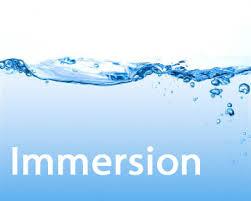The immersion photolithography is an optical path design that combines refraction and reflection can reduce the number of optical components of the projection system, control aberration and thermal effects, and realize the numerical aperture Na of 1.35. When the immersion photolithography is not completely immersed in the water, but is only filled with water between the exposure area and the photolithography lens. Exposure head (Exposition head) must be specially designed to ensure: (1) water is stepped in the wafer surface - scanning movement, no leakage; (2) There is no bubbles and particles in water. At 193 nm wavelength, the water refractive index is 1.44, and NA can be achieved.
Figure 1 is a schematic diagram of an immersion photolithography, deionized water, which is further removed, degssing, flowing into the exposure head after constant temperature, filling between wafer and lens, then Exuberant. In addition to surface tension, the exposure head is also designed with special routing (air knife) to ensure that water is not easy to disclose from the side.

